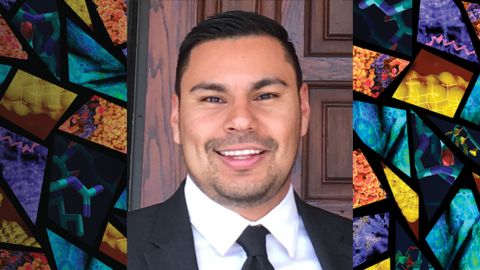MCP session focuses on proximity-dependent biotinylation
How proteins interact with one another and with other macromolecules, their organization in cells and how these associations are modulated following perturbations long have defined an important branch of the field of functional proteomics. In the past 10 years, approaches that enable the study of these connections in the context of live cells — and now live organisms — have revolutionized the role of proteomics in cell biology.
This session at the 2021 ASBMB Annual Meeting focuses on proximity-dependent labeling approaches, which allow for the covalent tagging of proteins that have come in close proximity to a bait protein (a protein of interest fused to an enzyme) in the context of living cells. Coupling of this strategy to mass spectrometric identification of the labeled proteins permits the characterization of cellular organization.
Since its first implementation to identify the components of the nuclear lamina in cultured cells, proximity-dependent biotinylation has contributed to better understanding of the composition of both membrane-bound and membraneless organelles, defined new signaling complex components, and illuminated the molecular mechanisms underlying several diseases. Proximity-dependent biotinylation methods, including APEX and BioID, still are developing, permitting new experimental modalities and answering increasingly complex questions.
The three presenters selected by the editorial leadership of Molecular & Cellular Proteomics are early-career researchers pushing the boundaries of proximity-dependent biotinylation methods and their applications.
Tess C. Branon, a postdoctoral fellow at the University of California, Berkeley, will present her work on the directed evolution of promiscuous biotin ligases for efficient proteomic mapping in vivo.
Geoffrey Hesketh, a postdoctoral fellow at the Lunenfeld–Tanenbaum Research Institute of Mount Sinai Hospital in Toronto, will describe how he used proximity-dependent sensors to reveal new intricacies in amino acid signaling.
Ilia Droujinine, a principal investigator and Scripps fellow at Scripps Research in California, will introduce new work exploring protein trafficking by in vivo tissue-specific labeling in Drosophila.
Enjoy reading ASBMB Today?
Become a member to receive the print edition four times a year and the digital edition weekly.
Learn moreGet the latest from ASBMB Today
Enter your email address, and we’ll send you a weekly email with recent articles, interviews and more.
Latest in People
People highlights or most popular articles

Professorships for Booker; scholarship for Entzminger
Squire Booker has been appointed to two honorary professorships at Penn State University. Inayah Entzminger received a a BestColleges scholarship to support their sixth year in the biochemistry Ph.D. program at CUNY.

Microbiology Society names 2025 award winners
Nikea Pittman and Chelsey Spriggs receive MicroSoc's Equality, Diversity and Inclusion Prize, and Cesar de la Fuente gets the Fleming Prize for an early-career researcher.

Q&A with 2024 PROLAB winner Daniel Careno
Learn about Careno’s experience investigating circadian rhythms in Ariel Bazzini’s lab at the Stowers Institute.

RNA binding proteins with benefits
Blanton Tolbert studies the biochemical mechanisms of RNA virus replication while working to make science more accessible, and more interesting, for all people.

Honors for Bai, Thompson and Visweswariah
An honorary professorship for Bai, Thompson named endowed chair and Visweswariah is IUBMB's president-elect.

From antibiotic resistance to an antibody targeting immune cells
MOSAIC scholar Diego Pedroza got his start in chemistry, then moved to molecular biology, endocrinology and testing cancer drugs — “something that could truly make a difference.”




